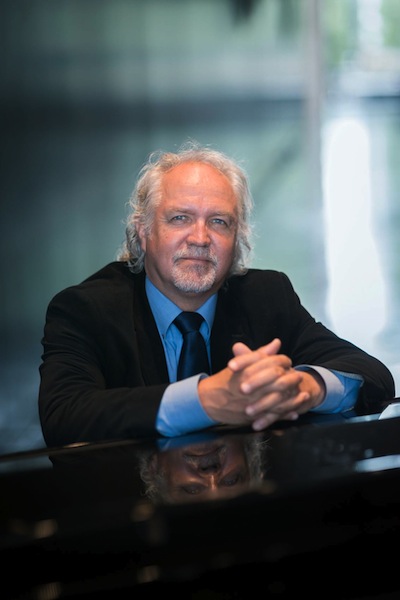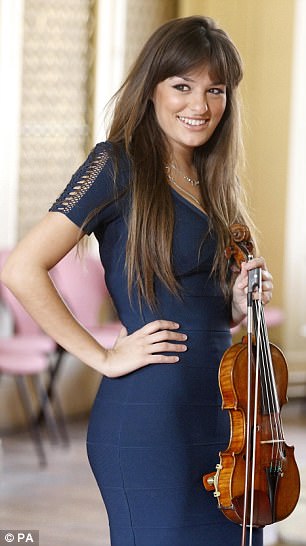Runnicles makes an impressive showing in thought-provoking DSO program

Donald Runnicles conducted the Dallas Symphony Orchestra Thursday night. Photo: Simon Pauly
The opening exclamation of Beethoven’s Overture to Fidelio launched a superbly conceived, beautifully performed concert by the Dallas Symphony Orchestra and conductor Donald Runnicles Thursday night at Meyerson Symphony Center.
The initial flash of symphonic lightning served to signal more of the glories to come as Runnicles journeyed through the Overture’s succinct reflections and adventures, with impressively efficient baton technique as well as intellectual grasp of the work’s neatly distilled drama. Only in the final moments of this short curtain-raiser did he lapse into the tendency of guest conductors unfamiliar with the Meyerson acoustic to allow a fortissimo to turn overly noisy.

Nicola Benedetti
The longest and most impressive item on the agenda followed immediately as violinist Nicola Benedetti–clad in a distractingly revealing gown–joined Runnicles and the orchestra for Beethoven’s Violin Concerto. Conductor and soloist both clearly agreed on an epic vision of this work, with the calm grandeur of the long orchestral introduction setting the stage for Benedetti’s quietly expressive entry. Benedetti’s clean trills and passagework, tossed off with serene ease, built inexorably toward a passionately delivered climax: in collaboration with pianist Petr Limonov, Benedetti has created her own enthralling cadenza based on Beethoven’s cadenza for the piano transcription of this concerto, nicely incorporating the timpani obbligato from the piano version.
In the Larghetto movement, Benedetti produced a hypnotic sense of lyricism, particularly in the yearning second theme; in the final Rondo movement, she managed a rare combination of solid, substantial tone and sprightly energy to round out a memorable presentation of this masterpiece.
After intermission, Runnicles leaped into the early 20th century and the twilight of late romanticism with Sibelius’s Seventh Symphony. In his final full-scale symphony, Sibelius abandons the pictorial evocativeness of his earlier works in the genre as well as traditional, multi-movement symphonic form, instead creating a continuous, episodic movement. Runnicles sailed through the structural challenges of the work and presented it as a consistently engaging study in symphonic color and a tour de force of musical architecture.
Runnicles further enhanced the evening by closing, after the Sibelius, with Beethoven’s Leonore Overture No. 3. What might have been a standard, old-fashioned overture-concerto-symphony event thus became a thought-provoking cycle. The two Beethoven Overtures, both related to the opera Fidelio, provided obvious Beethoven bookends to the concert, while placing the Sibelius symphony next to the Leonore Overture subtly demonstrated the beginning and ending of the romantic era. And, though placing too many works in the same key next to each other can in some cases be a programing miscalculation, the adamant C major of both the Leonore Overture and Sibelius’s Seventh Symphony underlined the contrast and the relationship of the two works.
On the whole, besides providing a memorable and meaningful artistic evening for the audience, Runnicles’s imaginative programming as well as his clear command of the orchestra on all levels left the impression of a conductor who should definitely come under strong consideration for the open post of music director for the orchestra.
The program will be repeated 7:30 p.m. Friday and Saturday and 2:30 p.m. Sunday at Meyerson Symphony Center. mydso.org; 214-692-0203.